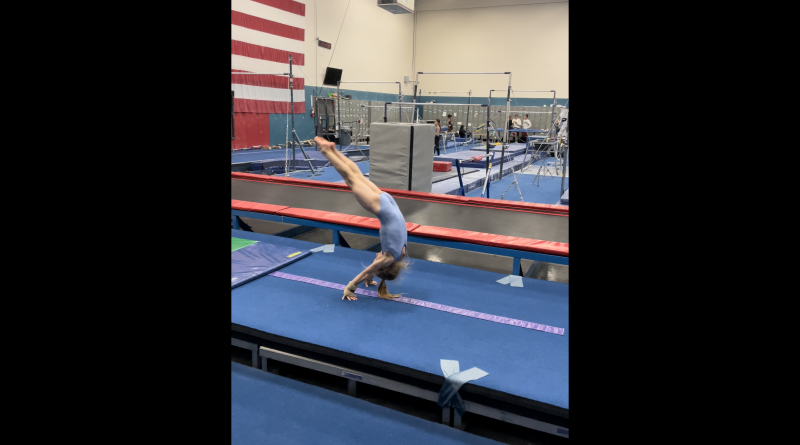Rock and Rolls
This is one of our favorite drills for working on general front flipping technique and shaping. The major points of emphasis are: Rounded back and shoulders as the gymnast rocks back and forth. Strong push from the legs to launch the hips and legs up over the hands to inversion. Look for drive to flat hips and strong leg tension. Straight arms with strong pressure down on the floor. Roll with strong hollow body until the hips are about to get to the floor, then tuck to finish the roll with feet under. This Rock and Roll mimics the overall flip shaping that we desire.
Punch to Dive Roll onto a soft surface
Number one goal here is to transfer the same quality of the Rock and Rolls into the dive roll. We are looking for the rise of the hamstrings and hips upon take-off. If you see the chest drop significantly and the arms reach low without a rise of the lower half of the body, go back a step and drill the Rock and Rolls more. You can do these dive rolls slightly uphill as well once the athletes understand the shaping/tension/technique being asked of them.
Front Handspring between/over block channel
This is the beginner version of this drill - The goal is to do a front handspring that doesn’t block off of the hands. Rather we want the athlete to go high enough that there is light pressure and then athlete leaves hands back to finish open. By starting with the handspring variation, you ensure the athlete is punching a creating hip rise over the top and not simply leaning forward and piking hips through punch.
Front Layout over block channel with slight hand touch
The second variation of this drill - Goal here is to perform an actual front layout but gently making hand contact on the blocks. We don’t want the athletes to put pressure down on the hands, but we do want them to feel their hands touching. This can encourage the gymnast to feel the touch for as long as possible to finish the skill with hands and shoulders still trailing slightly. We absolutely want to avoid athletes pulling forward with chin/hands/shoulders and sitting up to land or punch. Use the tactile feel to create the right habits.
Front Layout over block channel with no hand contact
The third variation is the same layout drill over the block channel but this time, with no hand contact on the blocks. If you see something wrong with any repetitions of this step, take them back to hand contact. Ideally they have created the quality habit each step of the way and therefor will hold onto the correct technique. It should mimic the same shape changes as the previous step. We want the arms to feel as though they are dragging behind slightly to the finish contact. This uphill action is great reinforcement for the correct punch positions and direction.
Front Layout – Uphill Front Tuck
Goal here is to work a nice long front layout - stay back to create a rebound that creates quality hip rise from the punch. The visual and the forced uphill reinforces the idea for the athletes that the last skill in a sequence should rise. Think skipping a rock on a lake… If you go too high on the first skill, it’s like plopping your rock down into the water. Keeping the first skill lower and longer, allows for the skipping rock effect. This means the momentum can carry the athletes into the next punch.
Beginner Front Twist Introduction
We like to start our front twisting by doing a front pike - open. The goal in using this technique is to create a reliably late twist that helps the athletes understand the ideal timing. Often times if you allow young kids to try front twisting without any guidance, they will do a no handed roundoff style of twist. This often leads to the athlete twisting forwards the opposite direction of their back twist. Upside down, things can get confusing as well. By doing a pike open and working the twist late (on the way down), it is easier to keep the gymnasts feeling the correct direction decided by the coach. Specific technique to work: Pike position kicks open to hollow body. As the body is opening, the chin moves towards the athletes twist direction shoulder. Chin should contact the inside edge of the shoulder and not on top/over the shoulder. Example of overall direction - Left Twist = Chin goes to left shoulder, left arm to outside of left leg, right arm across to left leg
Front Pike Half – Using the T-Trainer
Starter front twisting into the pit. This athlete is going into level 5 and is in the learning process of front twisting. Though this is not performed perfectly, you can see the focus points generally being worked. Now she needs to keep drilling and maturing the skill through repetition and focused small corrections.

